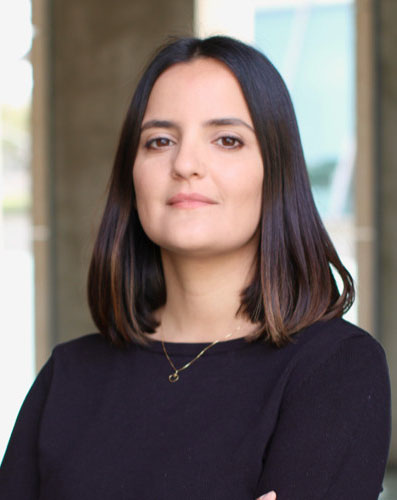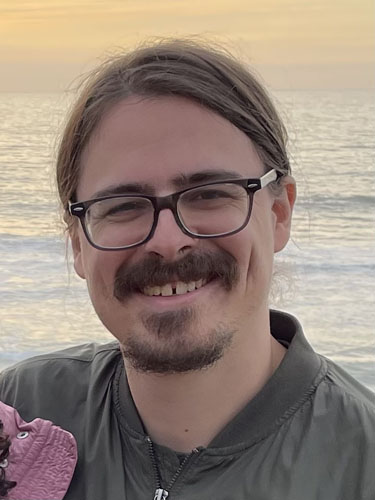B-HIVE Structure Highlight: Reactive Docking
Targeted inhibitors
In our search for therapeutic drugs, we’re always looking for compounds that block one target very specifically. For example, in anticancer drugs, we want to block only targets that are in the cancer cell, and for HIV therapeutics, we want to block the action of integrase, reverse transcriptase, or one of the other viral proteins essential for their infective life cycle. Unfortunately, many drugs are not perfectly specific, and binding to non-target proteins can lead to serious side effects. Targeted inhibitors are a new way to boost the specificity of a drug.
The trick is to include a reactive chemical group in the inhibitor that creates a chemical bond with the target, locking it in place. Often these targeted inhibitors include a portion that targets a binding site in the protein, and a reactive group that targets a particular type of amino acid that is near the binding site. By combining these two types of interaction, additional specificity is provided. For example, the anti-cancer drug shown here includes a portion that targets the ATP binding site of the receptor for epidermal growth factor. If the drug only included this portion, it would also target many other kinase enzymes that use ATP. However, the drug also includes a reactive acrylamide group that forms a covalent bond with a nearby cysteine amino acid in the receptor. Most other kinase enzymes do not have a cysteine in this position, so the drug preferentially targets the EGF receptor.
Reactive docking
B-HIVE researchers have developed a new method for finding sites in target proteins that are well-suited for targeting by covalent inhibitors. The method predicts the way that a trial inhibitor will bind, and when it binds, if it will be in the proper position to form a covalent bond. The method is fast enough that it may be used in huge virtual screens for discovering new covalent inhibitors. A large library of trial inhibitors, for example a diverse collection of acrylamides, is docked to all possible binding sites in the protein, for example sites with an exposed cysteine. The best solutions will identify sites that include a binding site that fits the inhibitor well and that has an appropriately-positioned amino acid for forming a covalent bond. In this new study, B-HIVE researchers have vastly expanded the functionality of reactive docking, so that we now can predict the action of inhibitors with 30 different types of chemically reactive groups, that form covalent bonds with cysteine, lysine, serine, and several other types of amino acids. The team is currently working to expand the types of chemically-reactive groups that may be studied, and improve the accuracy of the predictions.
How this is used in HIV research
The HIV research community is actively searching for new anti-HIV drugs to help fight ongoing problems with drug resistant HIV strains. The most successful approach has been to use a cocktail of drugs that target different proteins in the virus, making it more difficult to evolve new drug resistant strains. Most of the current drugs block the three enzymes of HIV: protease, integrase and reverse transcriptase. By application of methods like reactive docking, researchers are trying to discover drugs that block more challenging targets in the virus.

(Left) Afatinib is one of the first targeted covalent inhibitors of kinase enzymes. The portion on the right, with several rings, mimics ATP and the portion highlighted in magenta is an acrylamide group with a particularly reactive carbon atom. (Right) When the drug binds to the EGF receptor, the acrylamide forms a covalent bond with a cysteine at position 797 in the protein chain. Image created using PDB ID 4g5j.

Here, the reactive docking method has identified four cysteines (turquoise at left) that are exposed on the protein surface. When a trial ligand is docked, in rare cases, the ligand will bind in the proper position for forming a covalent bond (top right), but most sites and most ligands will not have the proper geometry (bottom right). By screening many different ligands and many sites, a molecule with the proper geometry may be discovered.
Meet the Researchers

Giulia Bianco
How did you get interested in science?
In Italy, we must decide on our educational journey very early both for high school and university. I studied classical studies in high school and then enrolled in a scientific university, where I studied chemistry and pharmaceutical technology. My journey could be considered atypical, but in Italy it is very standard. It was actually during high school that I discovered a passion for biology and all its mechanisms and pathways. Chemistry not so much because I really couldn’t understand it. However, I wanted to challenge myself by doing something that combined both biology and chemistry and it was actually during my college years that I discovered a newfound enthusiasm for chemistry. Here is also where I learned that professors play a fundamental role in this. I was fascinated by the pathways and transformations I explored in pharmacology, by the different mechanisms of each drug (not so much by their synthesis). This mix of chemistry and biology then led me to want to explore computational chemistry and drug discovery.
Tell us about the lab where you did this work.
This project was carried out in the Forli lab, at Scripps Research in La Jolla, California. I had the chance to visit this lab 10 years ago and I noticed how the lab evolved during this time. This is the lab where Autodock was first developed and during these years all the efforts have been focused on the improvement of this widely used docking software for drug discovery. In the lab, this software and other computational tools are used for large virtual screening of potential binders of different proteins of HIV-1, Sars-Cov-2, and other therapeutic targets.
What were the biggest challenges with this study?
This was a very challenging study. The idea was to use a fast calculation, such as molecular docking to model very complicated reactions, naming covalent reactions between different classes of compounds and amino acid residues. It took several trials and simulations to realize that the best way to overcome this obstacle was to come up with a set of parameters that could work across different classes of covalent inhibitors.
As previously said, this is a lab constantly evolving to find the best model able to validate experimental results. Therefore one of the challenges was to keep pace with the development of the software and the simulations carried on for this specific project.
We are happy with the outcome of the study and are persuaded that this tool is very useful for the discovery of targeted covalent inhibitors.
What are you working on now?
By working on a very focused project for different years and reminding of the interest I always had for something that could combine biology, chemistry, pharmaceutical chemistry, and drug discovery I decided to shift my career to something different, where I could be involved in the big picture of the drug development process. For this reason, I have decided to transition into the role of project manager in a scientific environment.

Matthew Holcomb
How did you get interested in science?
I developed an early interest in science and mathematics due to some excellent teachers throughout my early education, and a strong affinity for the idea that you could prove or disprove something definitively. This naive view could only survive up until the point of doing my own research, but was quickly replaced by an appreciation for all of the wonderful strangeness of chemistry. The central science seems determined to defy representation, and trying to wrestle it into something that can give you meaningful insights is as rewarding and essential as it is challenging.
During my Ph.D. one of the central questions I was asking of a system was ‘Is this a hydrogen bond?’. This simple question masks complicated ones, like what is a hydrogen bond anyway, or even any sort of bond for that matter. The paper we ended up publishing on the topic reads more like ‘These are observations about this system that are consistent with other systems people describe as hydrogen bonds.’ Describing systems in terms such as these are essential for science communication, because you can’t just dump the wavefunctions from your calculations into somebody else’s brain and have them fully understand the system.
In sum, my interest in chemistry is driven by the phrase ‘All models are wrong, some models are useful.’ Even if I got here hoping that rigorous science would yield definitive answers, I now embrace the challenge of finding the least wrong, most useful way of representing chemical systems to push science forward.
Tell us about the lab where you did this work.
Our lab, led by Dr. Stefano Forli, is at Scripps Research, and our building overlooks the beautiful Torrey Pines golf course, and Pacific ocean, in beautiful La Jolla, CA (my office does not have a window). We are the current maintainers of the AutoDock software suite, which is the most widely used open source docking software. Docking is the task of predicting affinities and binding modes of small molecules for proteins, and serves as an essential process in computer aided drug design. Our lab seeks to expand the capabilities of docking to more challenging protein targets and ligand chemistries, and to improve the efficiency and accuracy of the underlying tools.
What were the biggest challenges with this study?
The process of describing a new computational model involves a lot of discretion in the features to include in the model. Increasing model complexity increases both the difficulty of optimizing model performance, and the likelihood that you are overfitting your data, creating a model that will not generalize well to future observations. However, simple models can fail to capture the important features of a system. This study was particularly challenging on this front because data on covalent inhibitors is relatively sparse, with many possible reactive warheads but few observations for most classes. The model that we settled on has few parameters and generalizes well across these classes, and so we are happy with the result, but this is the greatest challenge at the outset of building any new model.
What are you working on now?
A large outstanding challenge in virtual screening is to better leverage the structure of the chemical library being screened to efficiently identify inhibitors, rather than needing to screen the entire library. This is increasingly important as library sizes grow, more drug-like combinatorial chemistries are being described, and as there is a greater focus on the environmental cost of large-scale computations.
